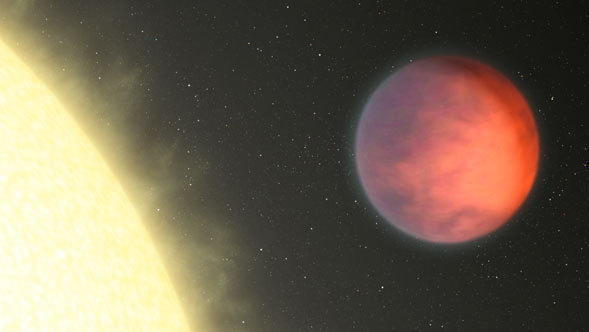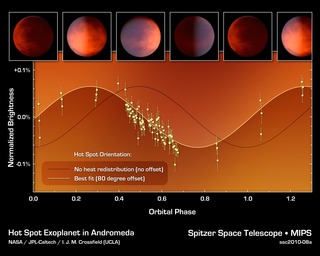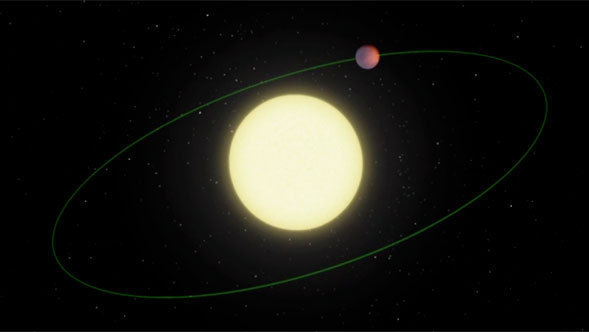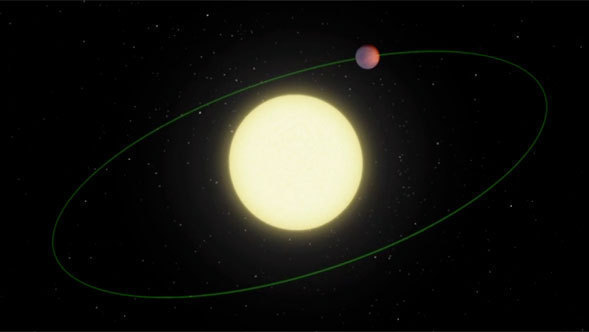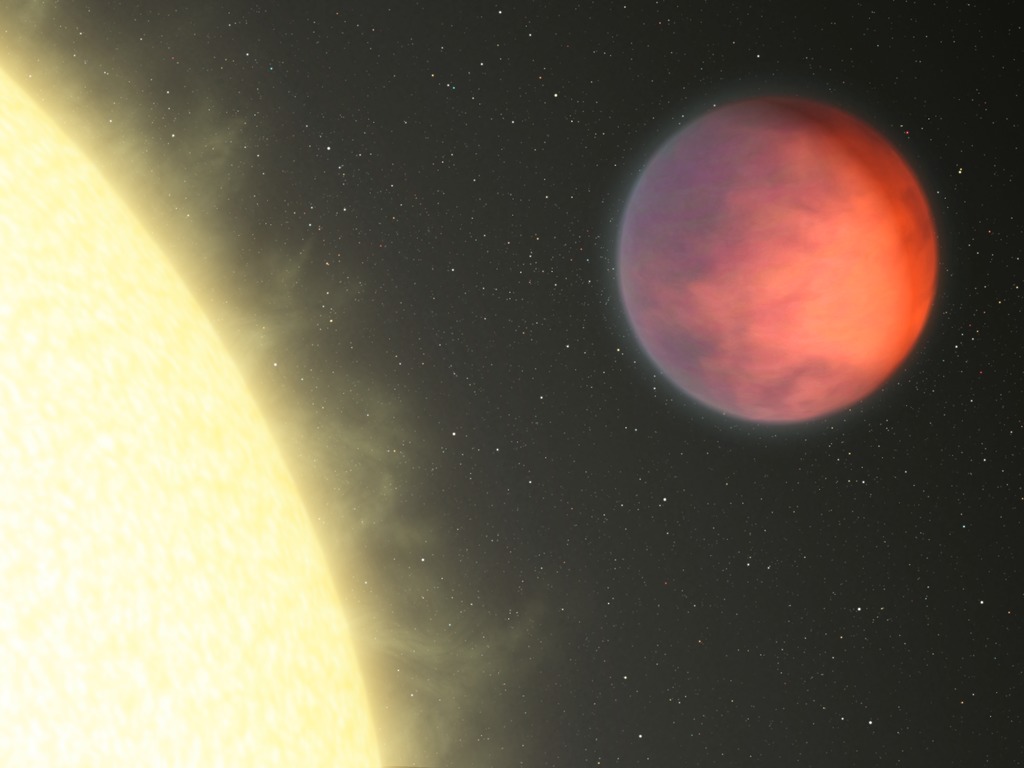
Credit: NASA/JPL-Caltech/R. Hurt (SSC)
Artwork • October 19th, 2010 • ssc2010-08b
ssc2010-08b
NASA's Spitzer Space Telescope has found that the hottest part of a distant planet, named upsilon Andromedae b, is not under the glare of its host star as might be expected. Instead, the planet's hot spot -- illustrated here in this artist's concept in brighter, orange hues -- is more than 80 degrees to the side, closer to the dark side of the planet.
The planet is a hot gas giant that whips around its star every 4.6 days. Because it is so close to its star, it is tidally locked, meaning that one side is eternally bombarded by the star's radiation. The other dark side never sees the light of day. Astronomers are scratching their heads as to why the planet's hot material is found so far over to the side.
About the Object
- Name
- Upsilon Andromedae b
- Type
- Planet > Type > Gas Giant
- Planet > Special Cases > Hot Jupiter
- Distance
- 44 Light Years
